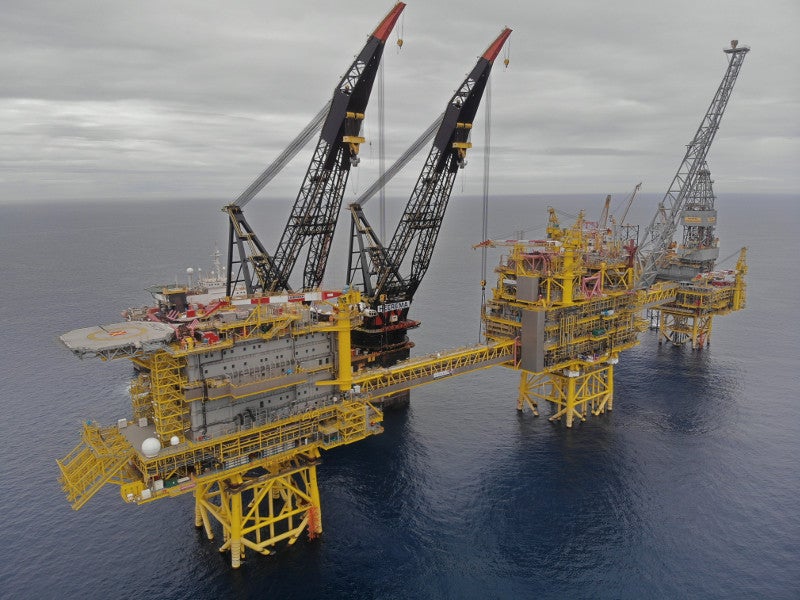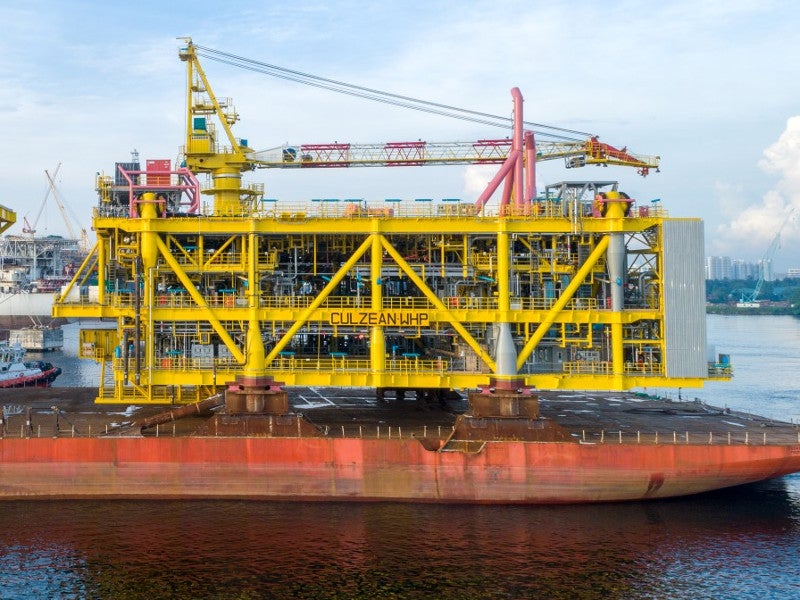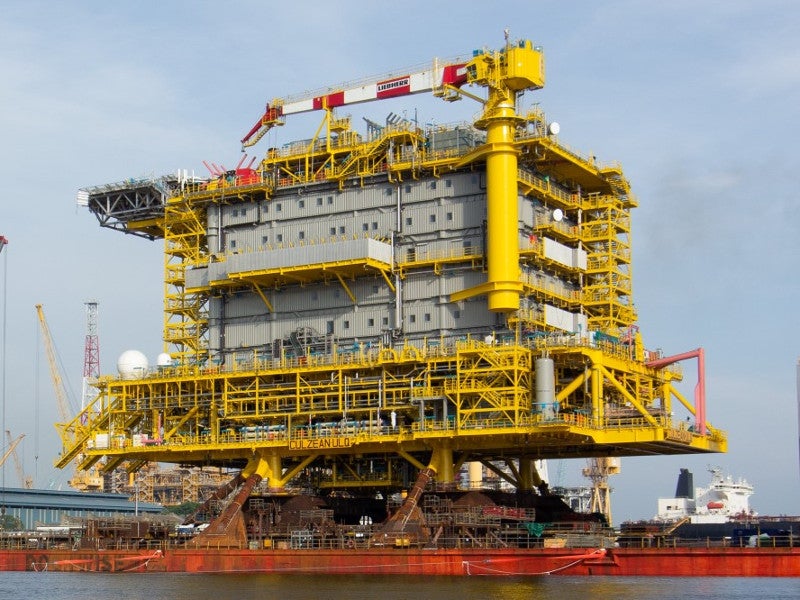Culzean is a high-pressure / high-temperature (HP/HT) gas condensate field located in Block 22/25a (License P111) of the UK continental shelf (UKCS), approximately 233.35km east of Aberdeen, in 90m of water.
Owned by Total (49.99%, operator), BP (32%) and JX Nippon (18.01%), the Culzean field is estimated to contain between 250 and 300 million barrels of oil equivalent (boe) in reserves. It will provide for approximately 5% of the UK’s total gas consumption and will have a life cycle of at least 13 years.
The development plan for the gas field was approved by the UK Oil & Gas Authority in September 2015. Installation works began in 2016 and first gas was achieved in June 2019.
The development cost of the Culzean field is estimated to be more than £3bn ($3.81bn). The Culzean project created over 400 direct jobs.
Discovery and geology of the HP / HT gas field
In December 2008, the Culzean gas condensate field was discovered with the drilling of exploration well 22/25a-9z. Appraisal well 22/25a-10z was drilled between 2009 and March 2011. It was tested twice and delivered a drilling rig constrained rate of approximately 40 million cubic feet of gas and 900 barrels of condensate a day during both tests.
Gas/condensate at the field is located within Triassic and Jurassic-aged reservoirs situated at a depth of approximately 4,500m below sea level.
Culzean gas condensate field development details
The concept for the development of the field includes a series of bridge-linked platforms comprising a 12-slot wellhead platform (WHP), a central processing facility and living quarters that can accommodate 100 people.
The facilities are connected to the Ailsa floating storage and offloading (FSO), a turret moored vessel that has a capacity to receive 25,000 barrels of condensate a day and store 430,000 barrels.
The vessel has a 40-year hull lifespan and can operate continuously for 25 years without dry-docking.
Details of the drilling rig used for Culzean
An improved high-specification, harsh-environment (HSHE) self-elevating drilling rig based on the Friede & Goldman JU-2000E design with was used at the Culzean field.
Owned and operated by Hercules Offshore, the rig was designed to operate in water depths of up to 400ft and drill at depths of up to 30,000ft. It possesses a static hook loading capacity of two million pounds and a cantilever reach of 75ft.
The rig enables off-line pipe handling and features 15,000 pounds per square inch (psi) blowout preventer systems and accommodation for up to 150 personnel.
Contractors involved with Maersk Oil’s gas field
The front-end engineering design (FEED) contractor for the Culzean project was KBR, while Intecsea was awarded the subsea FEED contract in August 2014.
Jurong Shipyard was awarded the contract for the construction of the rig, while the contract for the jacket of the WHP was awarded to Heerema Hartlepool.
Sembcorp Marine’s subsidiary SMOE was awarded an engineering, procurement and construction (EPC) contract to build the three topsides, while Subsea 7 received a subsea, umbilical, riser and flow-line (SURF) contract.
Ramboll designed the jacket structures for the wellhead platform, associated piles and appurtenances, while DNV GL was awarded a multi-service contract.
MODEC was awarded an EPC contract for the FSO vessel, while its subsidiary SOFEC designed and provided the internal turret mooring system.
Bilfinger, Tenaris, Emerson Process Management, Maersk Supply Service and Hobbs Valve were also involved in the Culzean project.
John Crane Asset Management Solutions provided data build services and developed a maintenance plan for the topside equipment.
Semco Maritime was contracted for carrying out electrical works, while Semco Maritime was contracted for manpower delivery, logistics and coordination of the works.
PJ Valves was contracted for supplying valves, while Emerson Process Management was contracted to automate the Culzean gas condensate field development.
SolstadFarstad provided four platform supply vessels (PSV) to support the hook-up and commissioning of the field.
Maersk placed a contract with Wood Group for mechanical and management services to support the hook-up and commissioning of the Culzean field.










